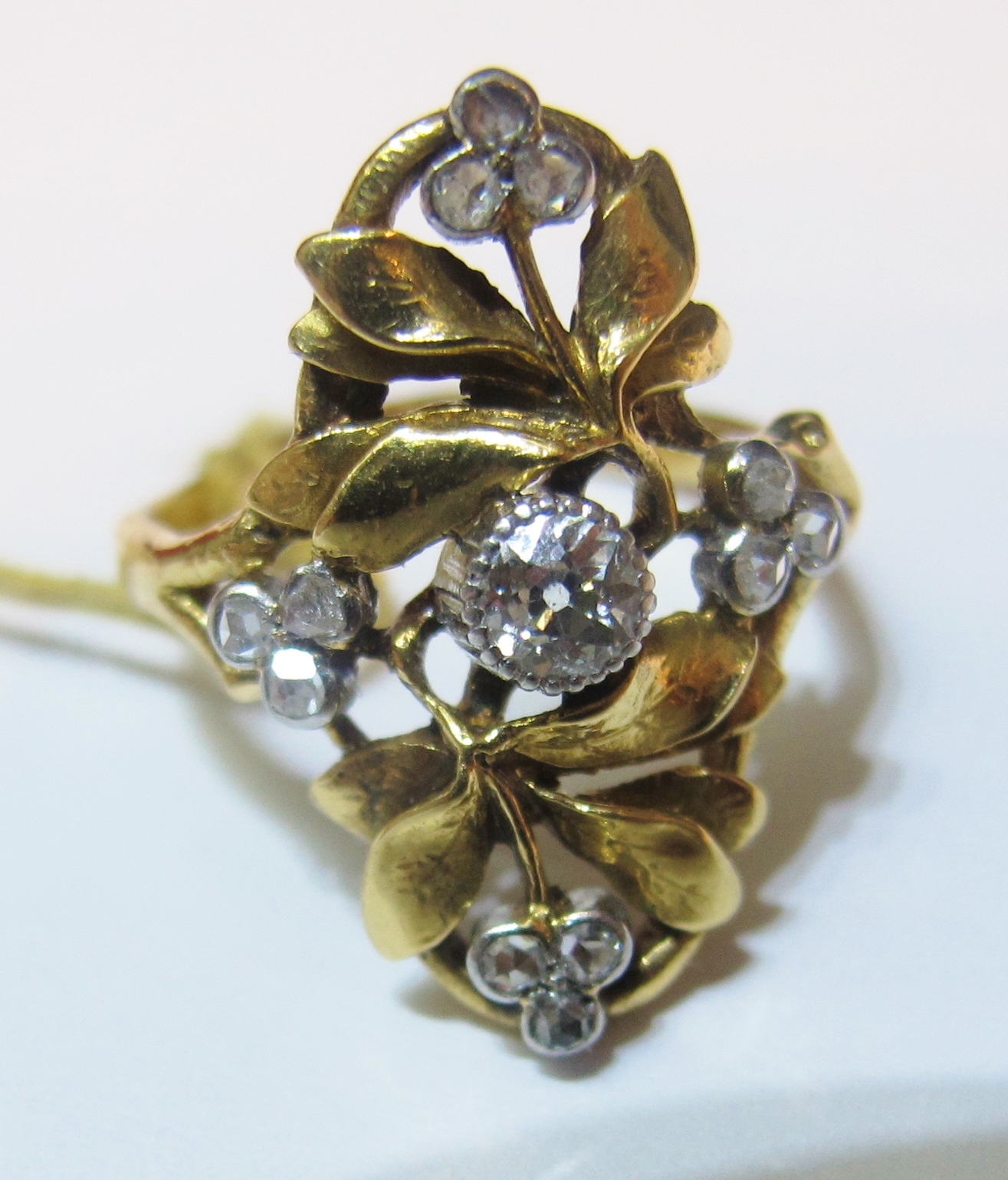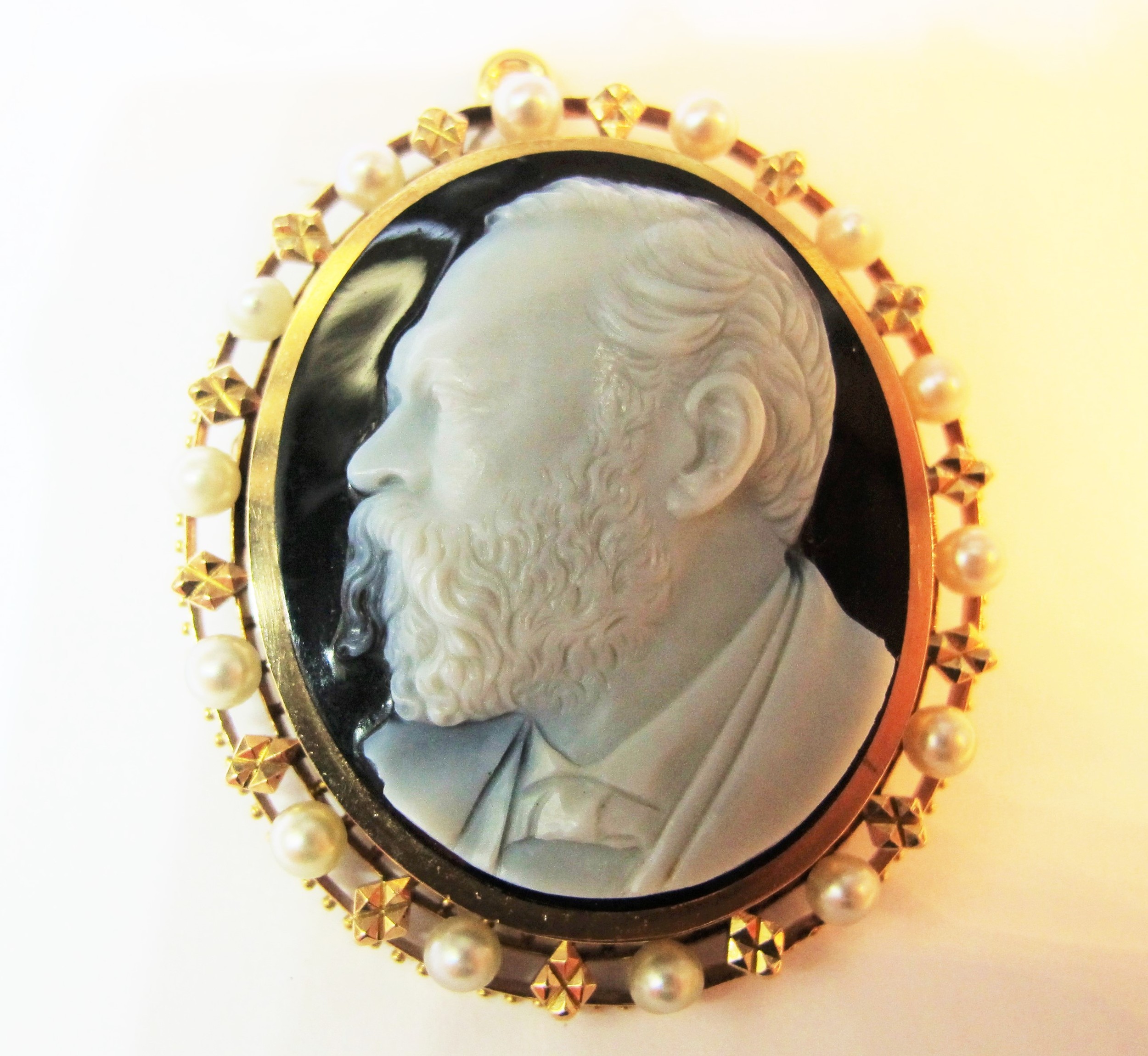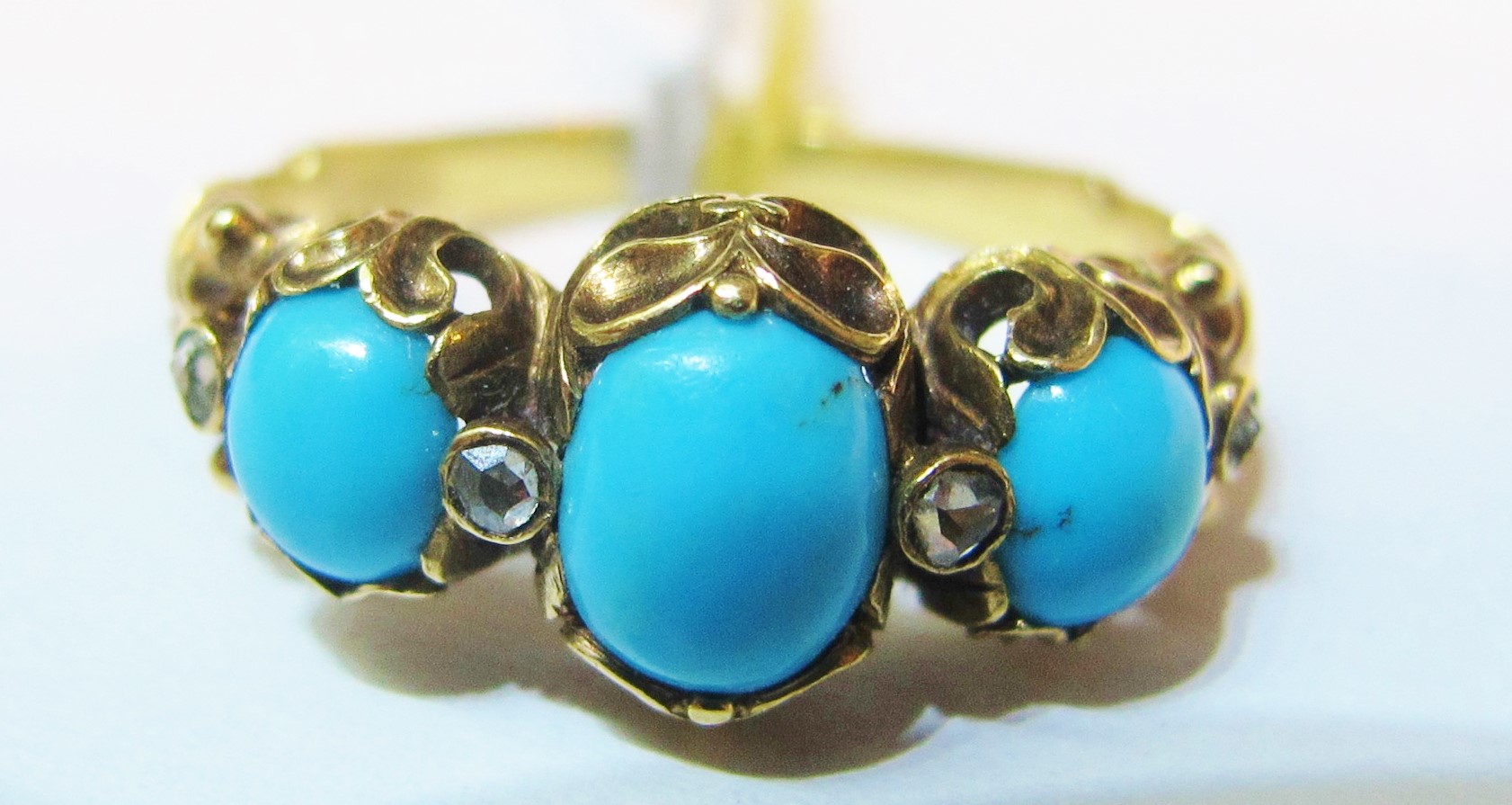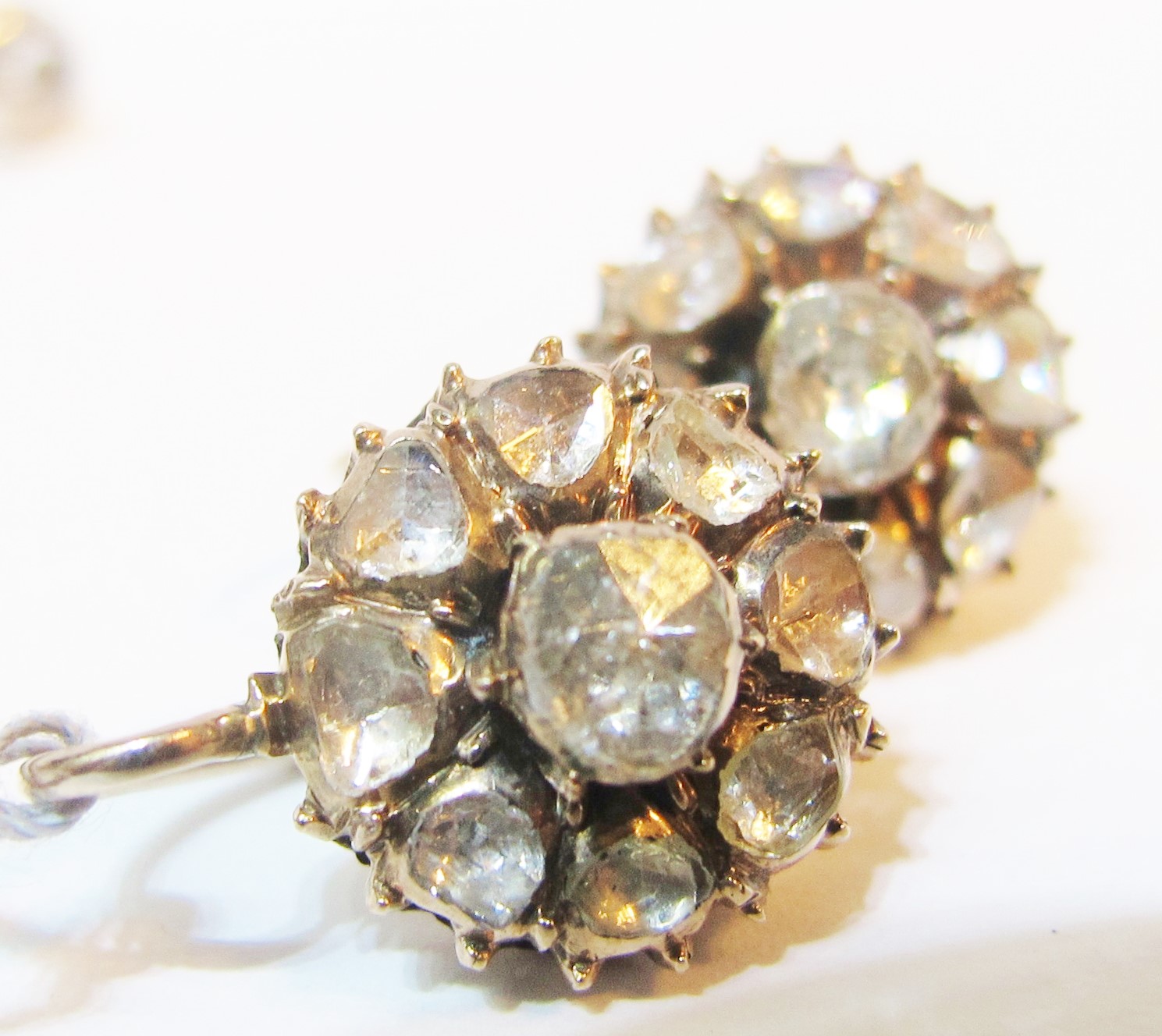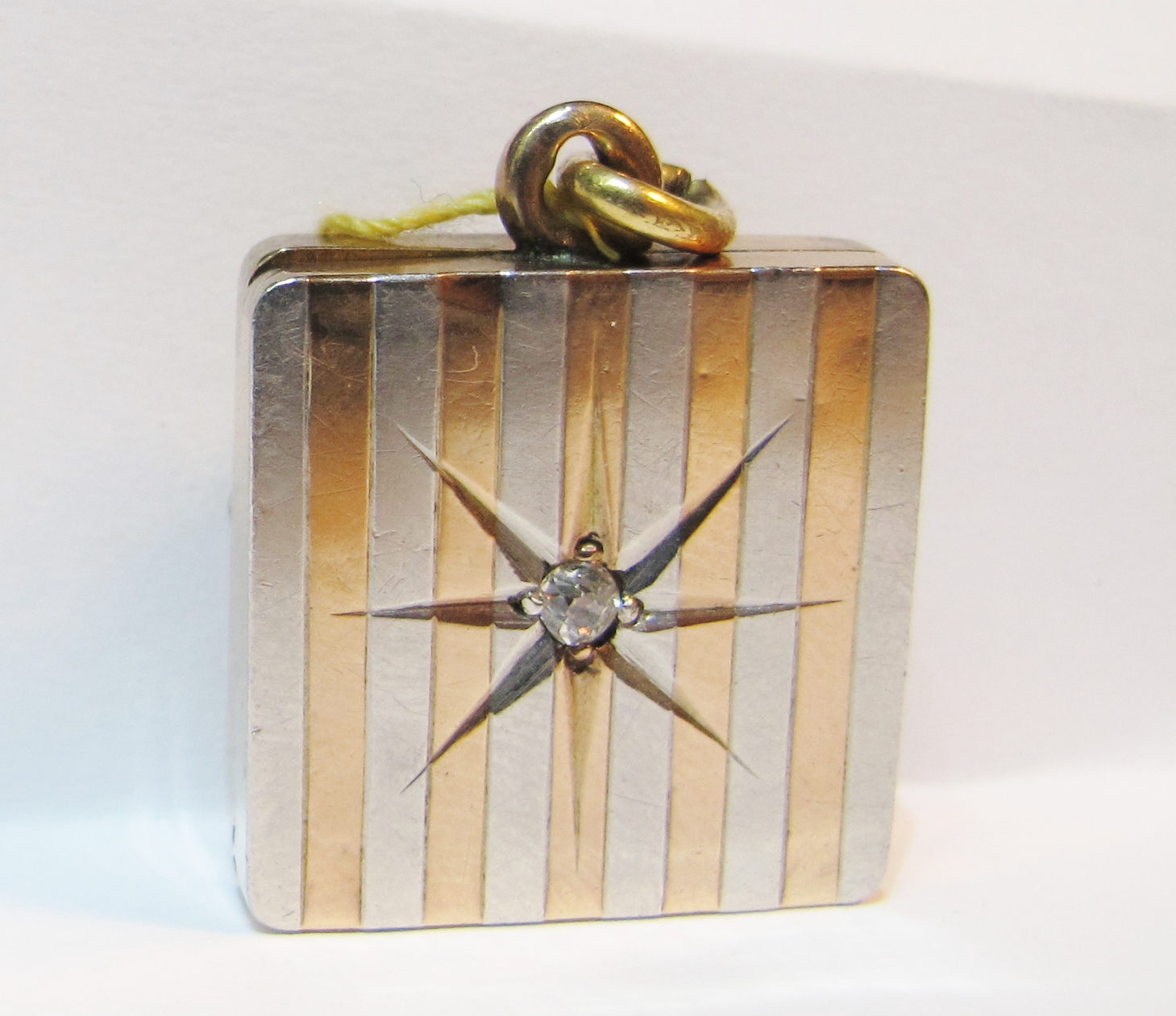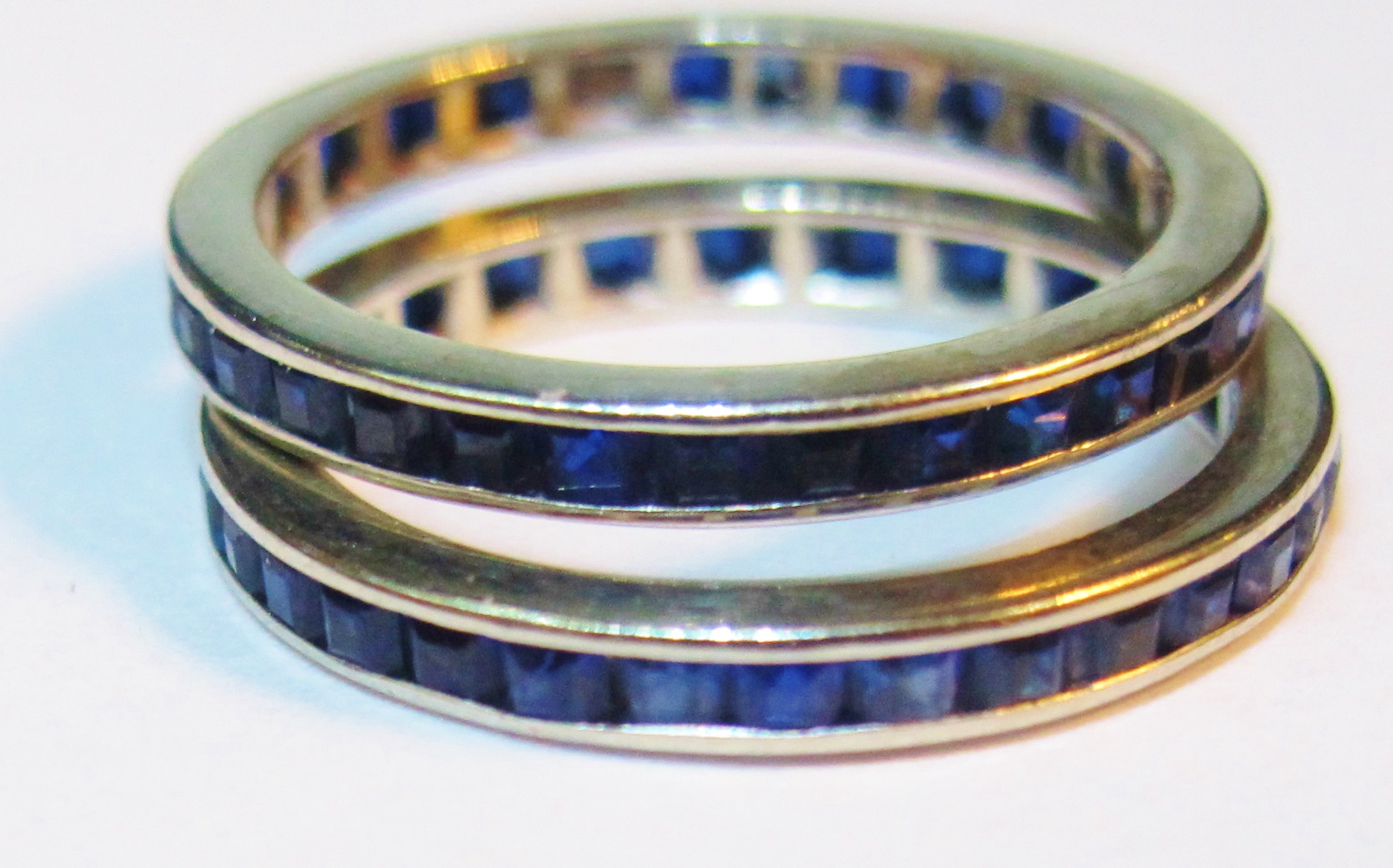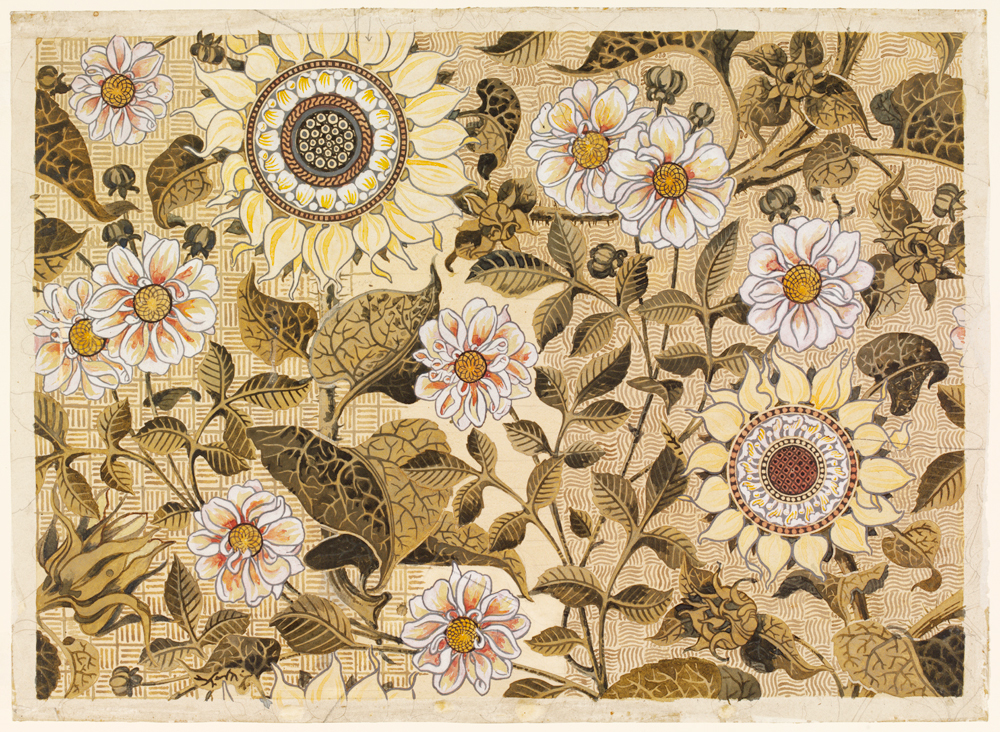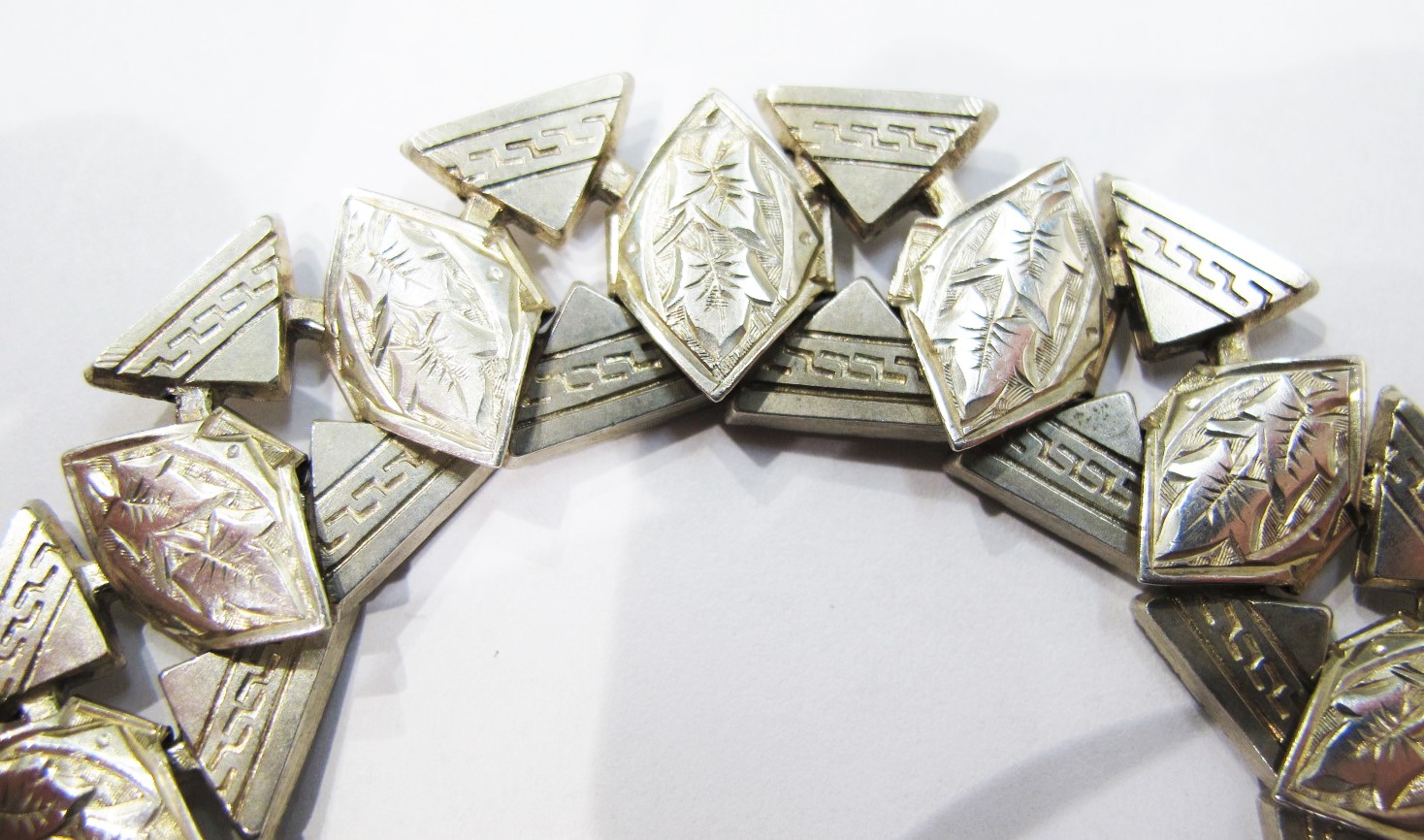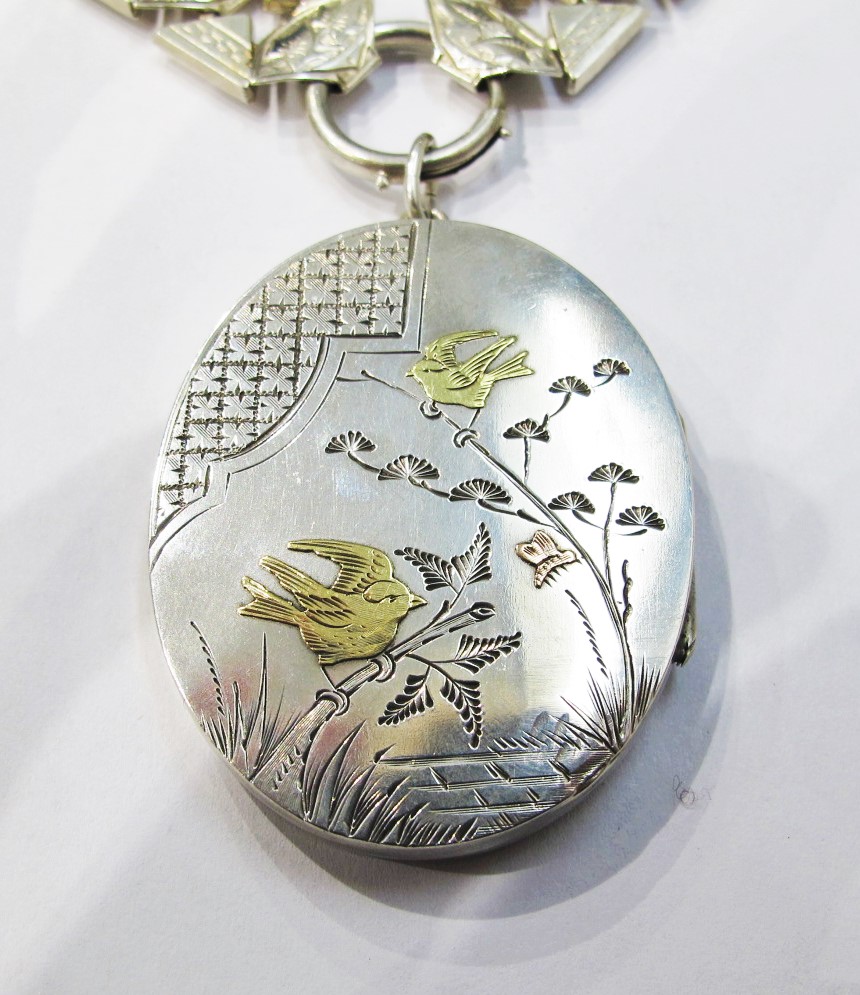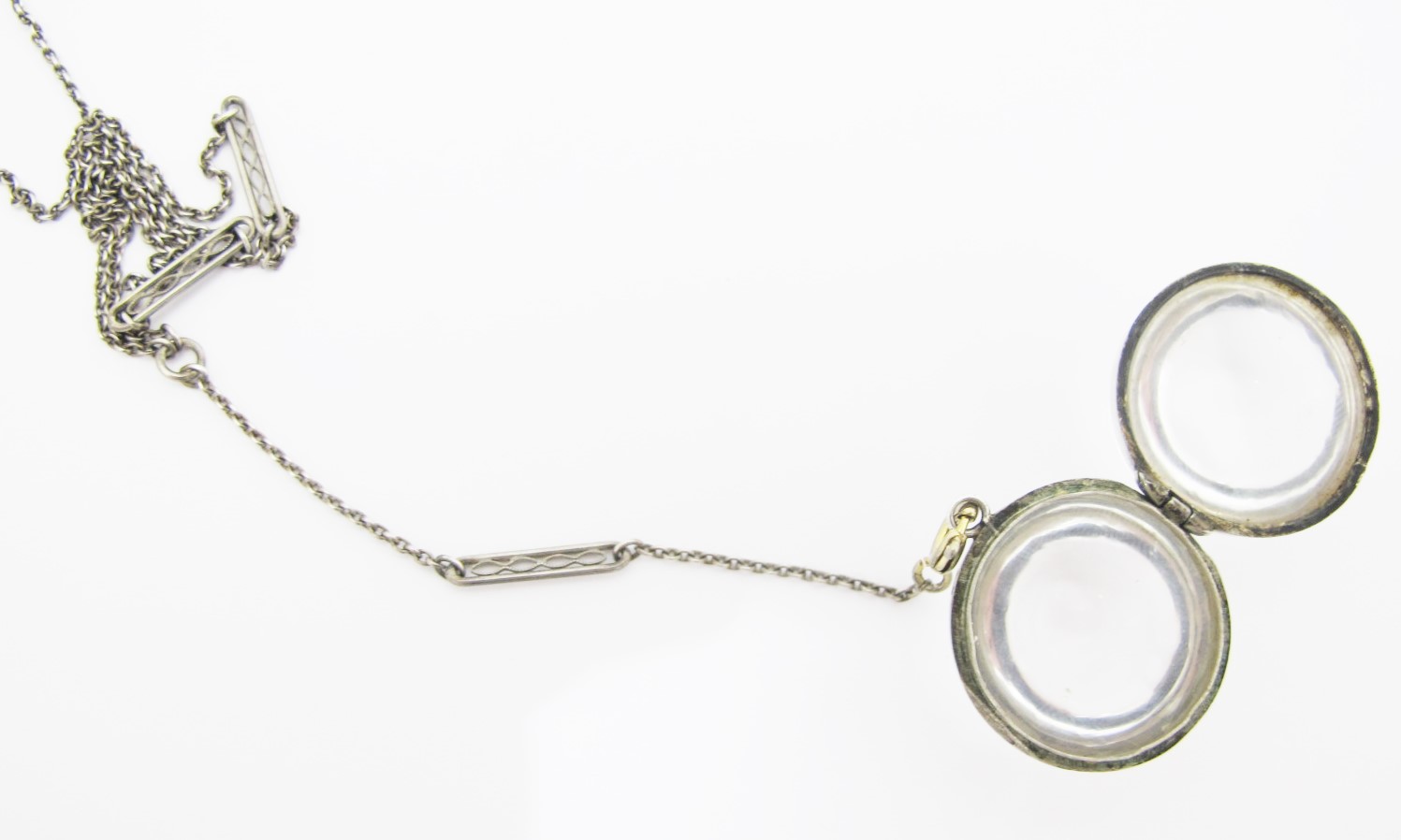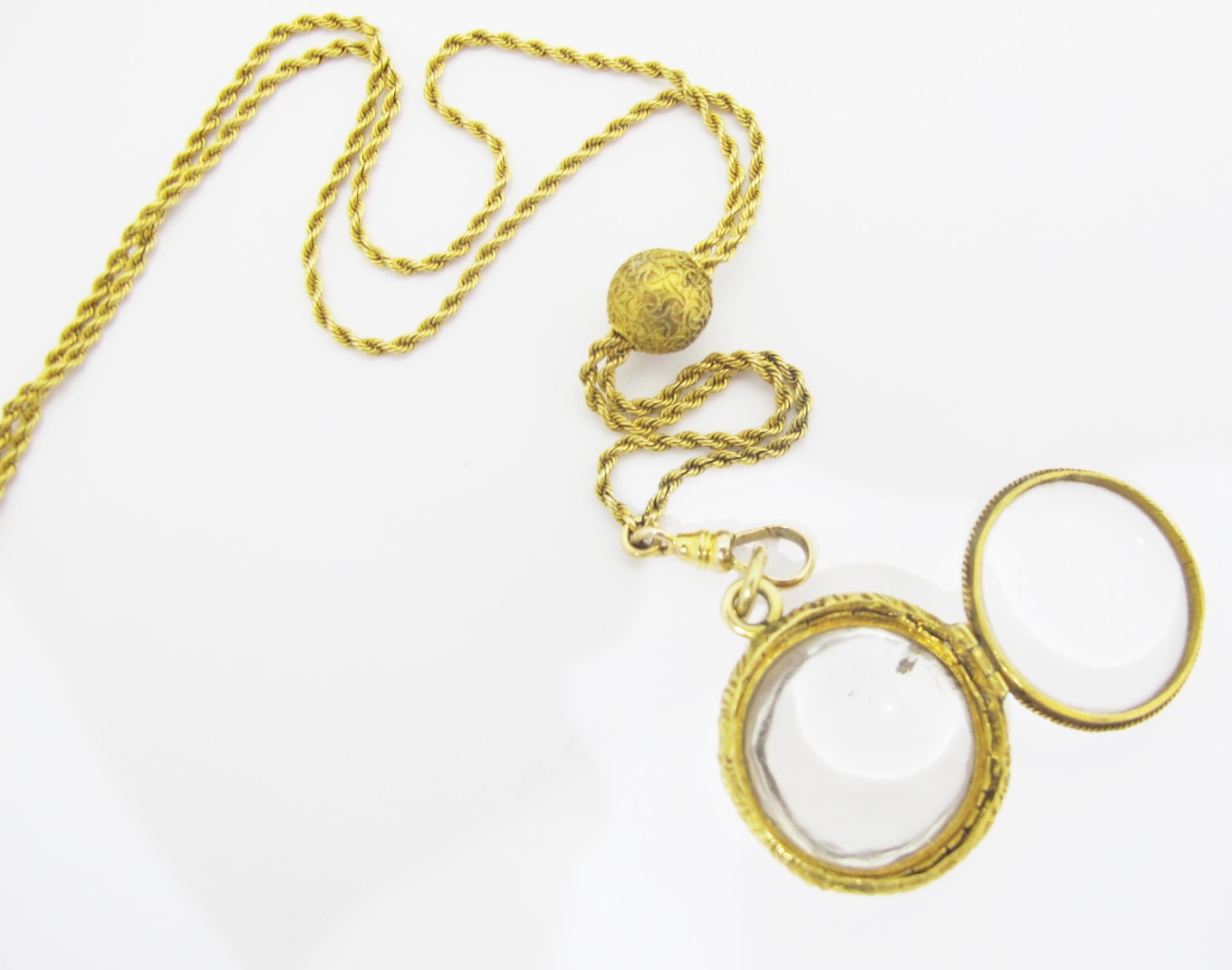We recently acquired a beautiful rose gold watch chain hung with an unusual locket fob.
18k rose gold locket and watch chain. European, c. 1850.
French import marks date the piece’s manufacture rather specifically to the 30 year period between 1838 – 1864. The front is decorated with a simple, attractive pattern of dots.
The back is where things get interesting: it’s pierced all the way through with an intricate vine-like design.
Inside, is a thick slice of rock crystal that swivels on a hinge. At first glance it appears the rock crystal is simply a protective lens for a photograph or portrait, but a closer look at the internal workings of the locket shows that it really wasn’t meant to function that way.
Our best guess as to the meaning behind this unique arrangement? The locket was likely used as a sort of talisman to bring luck or protection to its wearer. According to G.F. Kunz, rock crystal was traditionally believed to protect the wearer from the Evil Eye and bad dreams. The pierced openings in the back of the locket would allow the wearer to have more contact with the stone, thus increasing its effectiveness. Originally there may have been additional material stored within the locket as well – a piece of hair, a written prayer, or even the relic of a saint.
We always love learning about the past lives of the jewels that come across our path, but it’s especially exciting to come across a piece that might have magical powers.





